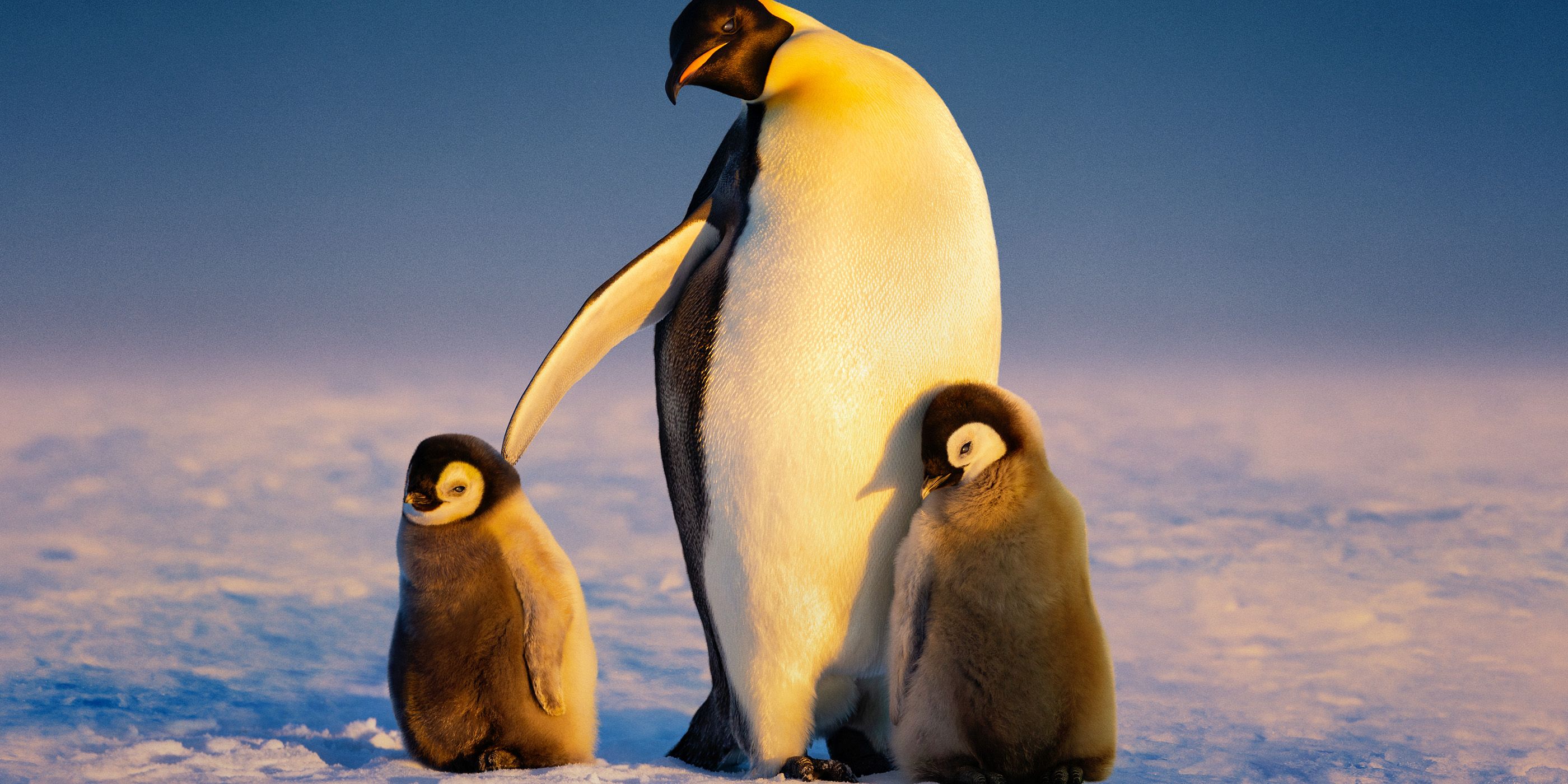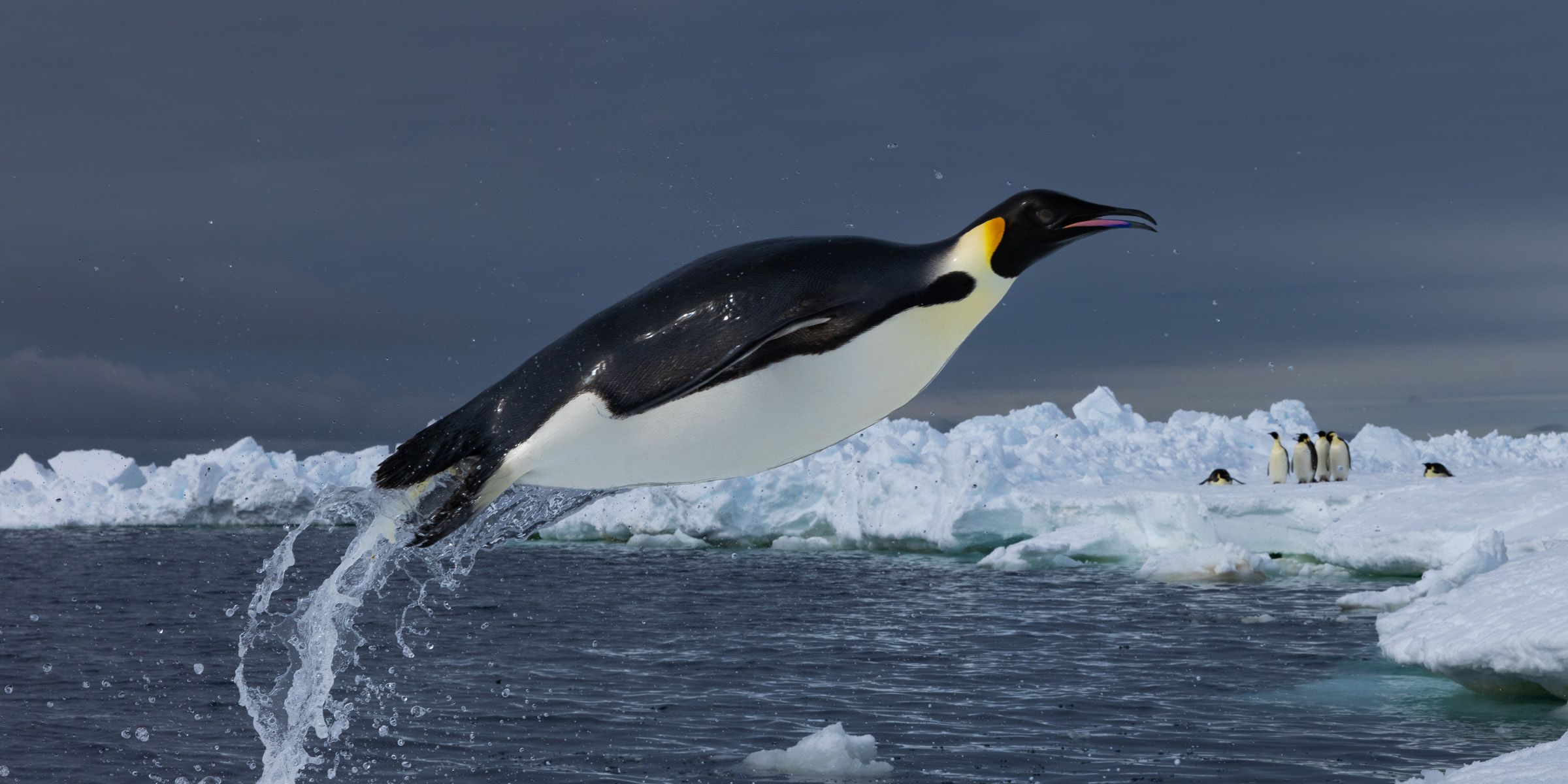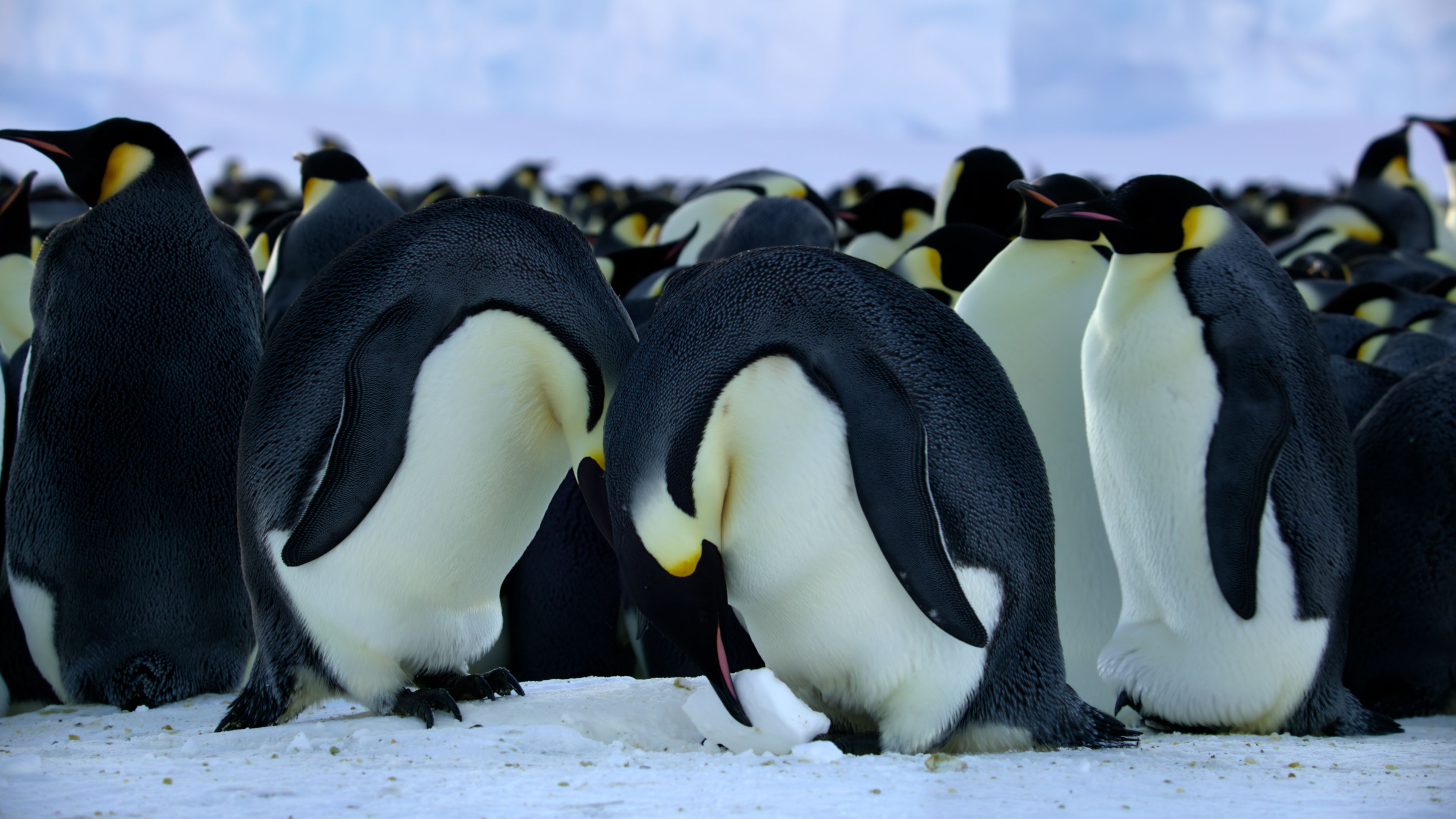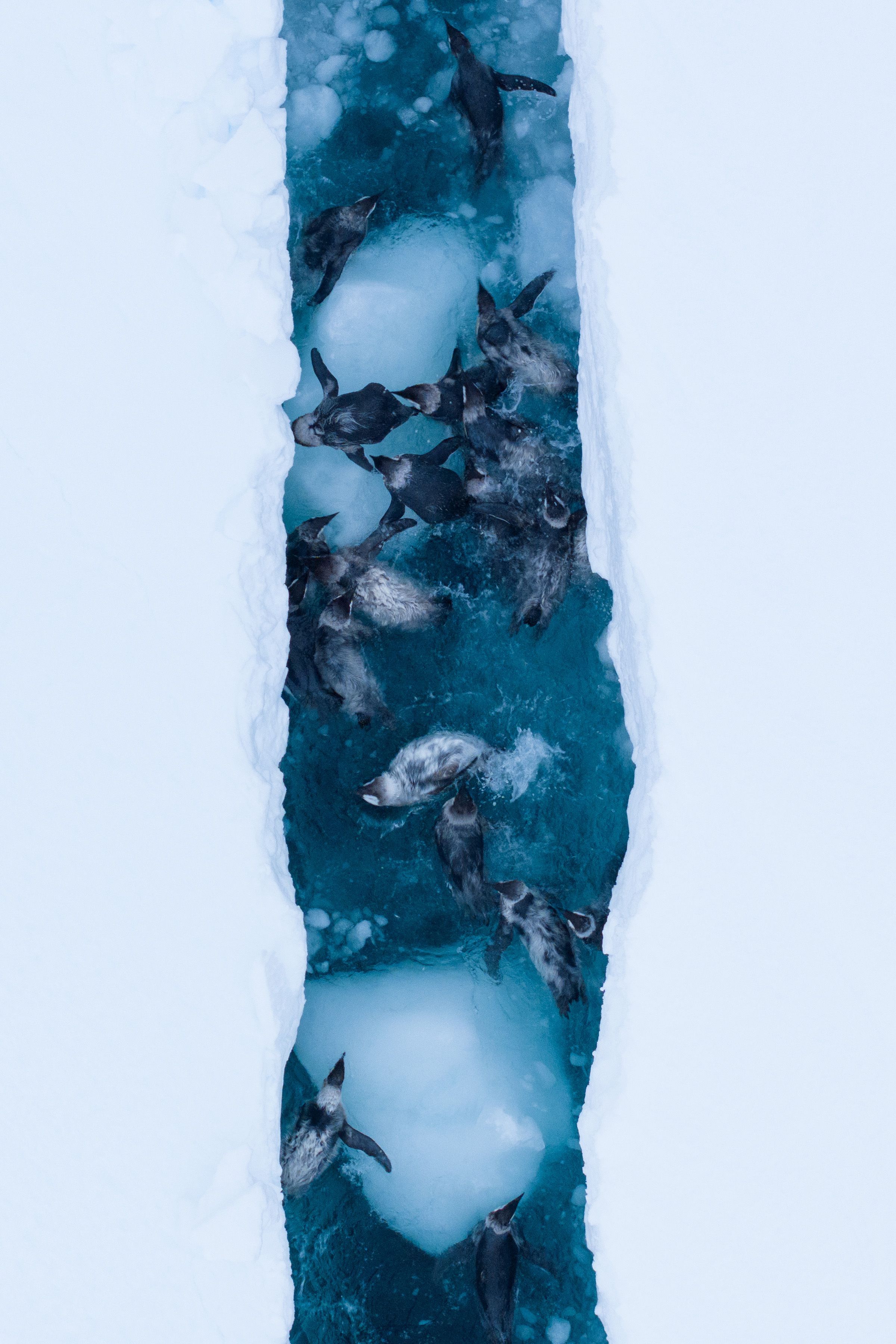[ad_1]
While National Geographic’s Secrets of the Penguins series impresses viewers with its awe-inspiring cinematic showcase of sweeping Antarctic landscapes and intimate wildlife encounters, not every jaw-dropping moment made it into the final cut.
In an exclusive conversation with ScreenRant, Net Geo Explorer and series host Bertie Gregory shared two unforgettable stories with us: a breathtaking penguin superpower that audiences didn’t get to see – and the technological advancements and ingenuity that made the Secrets of the Penguins series possible.

Read Our Cover Story
Secrets of the Penguins: An Unforgettable National Geographic Adventure
A deep and exclusive look inside National Geographic’s ambitious Secrets of the Penguins with host Bertie Gregory.
Along the way, I also caught up with Emeritus Professor John Davenport DSc FRSE, one of the scientists behind a key theory about Emperor Penguins that explains what Bertie Gregory captured, and he opened up about the surprising origins of the discovery that could change the way we think about penguins and marine engineering.
The Penguin Superpower We Didn’t See
There’s Another Secret of the Penguins
Two and a half months of filming in Antartica for Bertie Gregory, and another 274 days for a three-person team, yielded countless spectacular moments during the production of Secrets of the Penguins. But, as Gregory explained to me via Zoom while I was aboard the National Geographic Endeavour II exploring the Galapagos Islands looking for penguins, not all the epic moments captured could fit the final narrative.
“There’s so many [moments we loved but didn’t use],” Gregory said. “I’d really love that we could somehow make it like another penguin special, which is something we’re maybe trying to figure out down the road.”
One sequence we can hopefully see in the future captured emperor penguins using an extraordinary natural strategy called air lubrication to rocket themselves out of the ocean and onto towering ice cliffs. At first glance, penguins floating on the water surface after a fishing trip seem to simply be resting, but Gregory revealed in our chat that their behavior is far more purposeful.
“You’ll see them rafting on the surface and they’ll be preening, running their beak through their feathers,” he said. “Scientists thought that was just them resting, but now we know what they’re actually doing is loading their feathers with air.”
By fluffing their feathers, penguins trap pockets of air under their plumage. Their outer feathers then lock together, sealing the air in. Before launching, the penguins dive deep – up to 90 feet underwater – and compress their feathers, forcing the trapped air outward at just the right moment to create a tunnel of bubbles around their bodies.
“We filmed so many cool angles using super slow-motion cameras,” Gregory said. “It was so cool, but it just didn’t fit the film. So yeah, that’s one for another project.”
I looked into the published paper titled “Drag reduction by air release promotes fast ascent in jumping emperor penguins—a novel hypothesis” published in the Marine Ecology Progress Series which details how this bubble layer reduces drag, allowing the penguins to essentially double their swimming speed from about 2 meters per second during normal swimming to 5.3 meters per second on average when ascending. Some emperor penguins even reached speeds of 8.2 meters per second, the fastest ever recorded for emperor penguins.
Inside the Air Lubrication Breakthrough
The science behind this penguin superpower was first hypothesized in 2011 by Professor John Davenport and colleagues. I reached out and Davenport shared with me how a simple conversation sparked a major discovery.
“The paper describing the air lubrication hypothesis had its origins in a conversation over a beer at a scientific conference I organised in Cork in 2006,” Davenport said.
A fellow ecologist, Roger Hughes, had noticed penguins trailing bubbles underwater while watching footage from the BBC’s Blue Planet series. Davenport, a marine physiologist and former competitive swimmer, dove into the footage frame-by-frame and discovered something astonishing.
The bubbles weren’t coming from the penguins’ beaks – they were leaking directly from the feathers. This pointed to an interesting and unique adaptation: trap air, release it at speed, and ride the resulting tunnel of bubbles to launch out of the sea. “This immediately triggered thoughts of air lubrication,” Davenport tells me, noting the parallels to technologies used by Japanese engineers to reduce drag on ships and experimental Soviet torpedoes.
Unlike any other birds, penguins can actively control their feather structure, fluffing them to trap air and compressing them to release it. Their preen oil further stabilizes the thin layers of air needed for the technique to work.
Davenport and his team’s analysis of the BBC footage found that every penguin ascending rapidly trailed a cloud of bubbles, sort of like a jet stream trailing behind planes, and that no penguin without bubbles was ever seen ascending at high speed. And there may be other benefits beyond the added speed: air lubrication could also reduce noise underwater, making penguins less detectable to predators like killer whales.
“It’s one of the coolest examples of natural engineering you could imagine,” Davenport added while backing up everything Bertie had explained to me.
The Drone, the Cliff, and the Heated Gloves
There are secrets to HOW Secrets of the Penguins is made too!
While some epic science didn’t make the final series, other unforgettable shots – like Secrets of the Penguins’ most iconic sequence featuring emperor penguin chicks leaping from massive ice cliffs – only became possible thanks to cutting-edge technology and a bit of frozen-fingered creative problem solving.
In one of our interviews with Bertie Gregory, I asked him about the tech used during the shoot by him and the Talesmith production team. “One of the real game-changing pieces of technology was the drone,” Gregory explained.
Advances in battery life meant drones could now hover for longer, allowing Gregory and fellow Secrets of the Penguins filmmakers to wait patiently for animal behavior to unfold naturally. New and more powerful zoom lenses also allowed the team to stay farther away from sensitive wildlife, reducing disturbance and capturing truly natural moments.
“The only reason we were able to film the emperor penguin chicks jumping off that huge ice cliff was because of that new technology. We couldn’t actually get to where those chicks were. It was too dangerous the place they were in. So that whole sequence is shot with the drone.”
But flying drones in Antarctica’s brutal -30 to -40°C temperatures wasn’t simple. “The big challenge was just keeping warm,” Gregory said. “To operate the drone, you can’t wear giant mittens – you need fine motor control.”
The solution? Heated gloves wired to their camera batteries.
“I’d plug my hands into the camera and then they’d be toasty warm, and I’d still have the dexterity to fly the drone precisely. That sequence, we waited hours and hours, days in the cold with my hands out, and I could only do that because of the heated gloves we developed.”
More Secrets of the Penguins Still to Come?
No ‘Secrets Of’ docuseries has received a second season (yet).
Between penguin-powered physics and battery-powered gloves, Secrets of the Penguins is packed with ingenuity, discovery, and patience. And if Bertie Gregory has his way, audiences might soon get a second chance to see some of these “lost” moments.
“I’d really love that we could somehow make it like another penguin special,” he teased. So far, the various James Cameron produced Secrets Of series for National Geographic haven’t received traditional sequels or second seasons, but this unused footage captured around the globe over two whole years could be used in other Nat Geo works.
Secrets of the Penguins premiered on National Geographic and is available to stream on Hulu and Disney+.
[ad_2]
Source link


